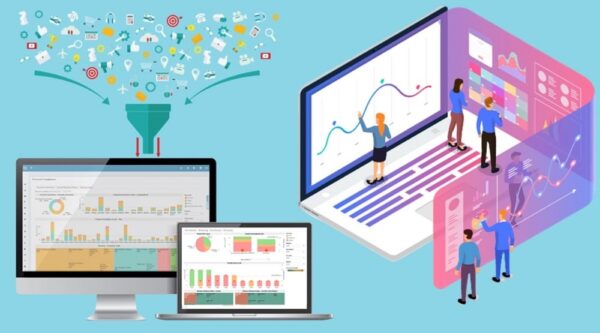How to Choose the Right Data Aggregation Tool
Data aggregation is compiling data from multiple data sources into a single, unified dataset. This can be time-consuming and challenging, but it’s necessary for accurate data analysis. There are several factors to consider when choosing a data aggregation tool, including the data sources, the type of data, and the level of detail required. This can be done manually or through a software tool. Data aggregation tools aim to make it easier to analyze and understand the data. This article will discuss how to choose the right data aggregation tool for your business. We’ll cover the different features to look for and how to evaluate your options. Keep reading to learn more.
Factors to Consider Before Choosing an Aggregation Service

When choosing data aggregation tools, there are several factors to consider. The first is the type of data you need to aggregate. The tool should be able to handle all data types. It should also be able to work with different formats, including text, Excel, JSON, and SQL. The next factor is the number of data sources you need to aggregate. The tool should be able to connect to multiple sources at once and consolidate the data into a single location. Consider your budget and technical expertise. Some tools are more expensive than others and may require more technical expertise to use effectively. Choose the tool that fits your needs and your budget. Finally, consider the features offered by different tools. Some tools offer more features than others, like analysis capabilities, reporting capabilities, or integration with other software programs.
Determine What Data Needs to Be Aggregated
One of the most critical decisions in any data analysis project is which tool to use for your data. The right tool can make data analysis accessible, while the wrong tool can lead to frustration and wasted time.
The first step is to determine what data needs to be aggregated and identify the data sources. This may be data from different sources, data at different levels of aggregation, or data with different formats. However, other data types can also be aggregated, such as text data or image data. This may include internal data sources such as sales data, customer data, or external data sources such as demographic or economic data. So you’ll want to select data aggregation tools that can access all of the necessary data sources; the most common data sources are databases, files, and web pages.
The next step is to determine the format or type of data and the level of aggregation. Data aggregation tools should be able to handle both structured and unstructured data. Structured data is data that is organized in a specific format, such as a table or spreadsheet. Unstructured data is data that is not organized in a particular format, such as text or images. The level of aggregation could include the detail required, the level of aggregation already available, or the level of aggregation desired. The most common formats for aggregation are text files, Excel files, and SQL files. However, other formats may also be used.
The third step is determining the level of detail required. Data aggregation tools should handle both summary data and detailed data. Summary data is organized in a concise format, such as a list or table. Detailed data is organized in a more comprehensive format, such as a spreadsheet or database.
Evaluate Your Options for Data Tools

When it comes to data aggregator tools, there are many different options to choose from. So, how do you choose the right one for your needs?
Some things to consider when comparing data aggregation tools include:
- The types of data the tool can aggregation
- The size of the data the tool can handle
- The speed of the tool
- The flexibility of the tool
- The cost of the tool
Once you have narrowed down your options, it’s important to test out the tools to see which one is the best fit for your needs.
There are various data aggregation tools out there that can cater to different types of data. Some are designed specifically for collecting website data, while others are better for social media platforms. Not all data aggregation tools are created equal. Some offer more features than others. Consider what features are important to you and which ones you can live without. Data aggregation tools can range in price from free to relatively expensive. Make sure you consider how much you’re willing to spend before deciding. Once you’ve considered these factors, you should be able to narrow down your options and choose the data aggregation tool that’s best for you.


